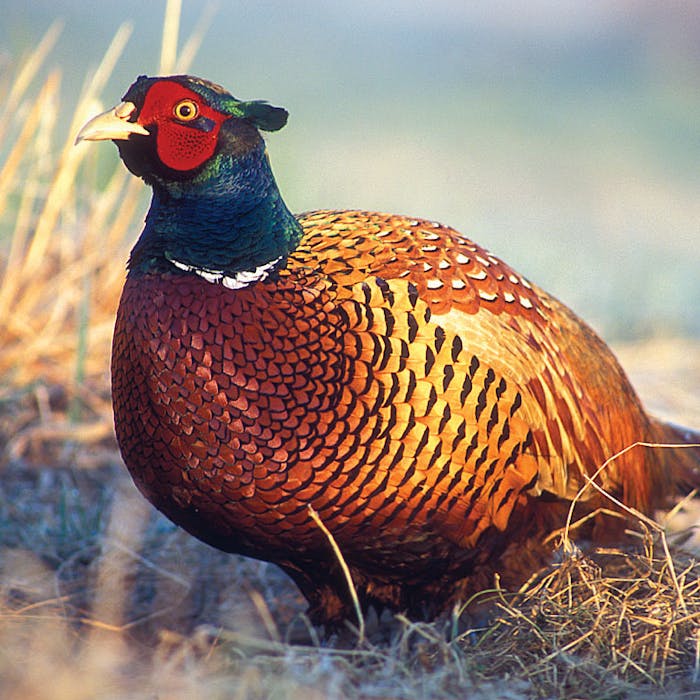
Common Pheasant
It comes as no surprise that such an exotic-looking bird as the Common Pheasant is not native to Britain, but was introduced to Europe from Asia by the Romans, arriving in Britain with the Normans in the 1100s.
A very familiar gamebird, the pheasant is large and colourful, and has a long tail. Male pheasants have striking bronze plumage, a red face and wattle, a green neck with a white ring around it and a long tail. Females are sandy brown, with an intricate pattern of black spots and bars.
Common in farmland and woodland throughout the UK, the males' loud, sharp, croaking call can be heard resonating through the countryside before the bird is actually seen. They are least common in upland and urban areas. They can usually be seen in the open countryside near woodland edges, copses and hedgerows.
Pheasants eat seeds, berries, leaves and insects; they roost in trees and can form flocks in winter. During the breeding season, one male may mate with many females, who then raise the chicks alone.
During the 20th century the pheasant became an increasingly important gamebird. Lowland game bags at the turn of the century suggest that the pheasant comprised about 15% of the bag (the main gamebird then being the grey partridge), whereas by the 1980s it had increased to more than 55% of the bag.
Though wild pheasants have been established in the British countryside for hundreds of years, their numbers are increased annually by pheasant shoot enthusiasts, who release an estimated 35 million pheasants each year. There is some concern about the adverse effects of this on the wild population and the wider ecosystem.
Further reading
Links to external websites are not maintained by Bite Sized Britain. They are provided to give users access to additional information. Bite Sized Britain is not responsible for the content of these external websites.
